Japan has been a prominent trendsetter in the global fashion industry since the widespread popularity of kimonos. The city of Tokyo, in particular, draws worldwide attention to street fashion. From traditional to modern, westernized to oriental outfits, Japanese fashion offers a voguish blend that appeals to style enthusiasts way beyond her borders.
A tour through Japan will enthrall visitors in the innovative ensembles of colors, fabrics and patterns in boutiques and shops. That is why many foreign runway stylists incorporate Japan's oriental flair into their designs. Hence, depicting an image of Tokyo as a universal luxury fashion hub.
Recently, global shoppers have opted more and more for these oriental style trends. Celebrities and influencers have made Japanese clothings, their entire wardrobe aesthetics including in music videos and performances. Could it be that Japanese fashion offers something unique that the rest of the world craves? This article seeks to explore and find the reason for the craze for Japanese styles like Harajuku, Lolita and Visual Kei
Harajuku: The Epitome of creative Street Style
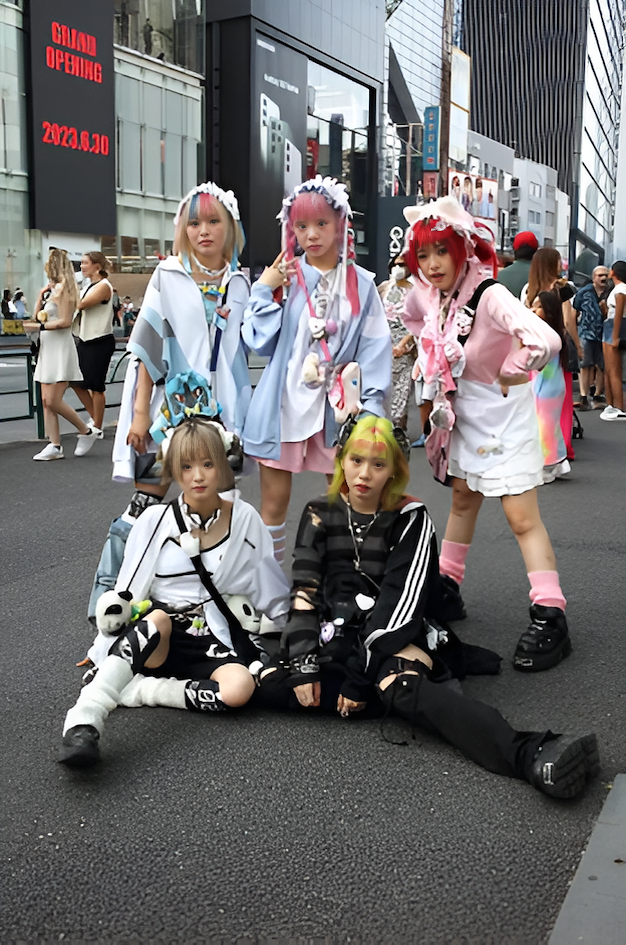
(Photo: Harajuku style in the streets of Tokyo)
Harajuku does not refer to a particular style but a combination of various ways of dressing in one place. Harajuku style sees the mixing and matching of different colors, textures, aesthetics and design, even down to hair dyes, to create a look.
The popularity of this fashion style can be traced back to the 1980s and early 2000s, postwar Japan when American soldiers and civilians settled in the district.
At the time, young Japanese people, eager to explore something new, flocked to Harajuku. They were drawn by the opportunity to experience Western culture and browse the American goods sold in local shops. This caused an intermixing of cultures and dressing, creating a unique style that is now named after the city Harajuku.
Back then many looks and styles were captured in the famous FRUiTS magazine, which focused on photographing stylish people around Harajuku.
Why is the Harajuku Style a Global Trend for Shoppers?
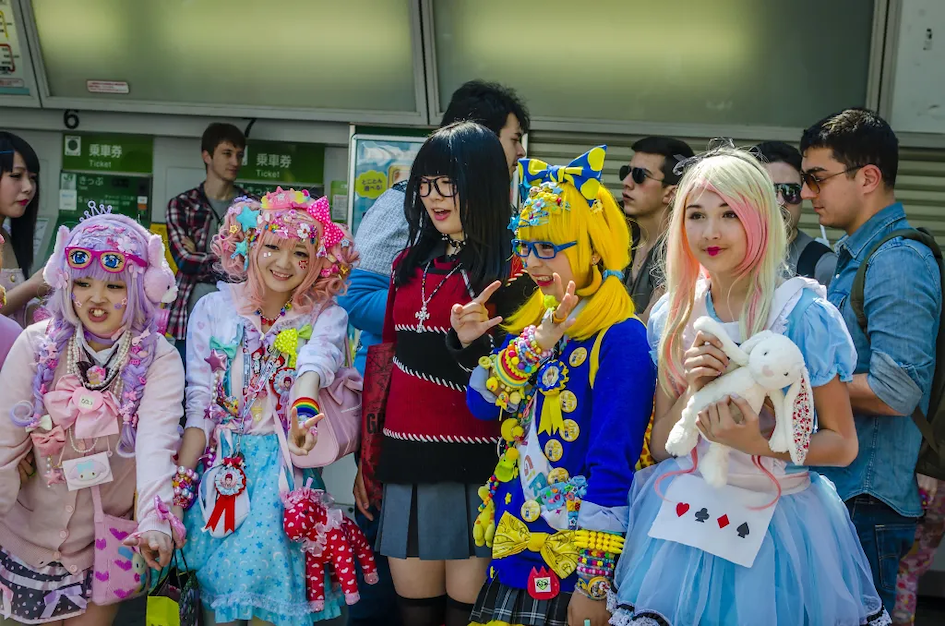 (Photo: Japanese girls wearing Harajuku styled clothes)
(Photo: Japanese girls wearing Harajuku styled clothes)
While the fashion style is broad with no defined limits, the subculture focuses primarily on community and freedom of expression. It is an influential force in fashion especially in this time where the media, art, and music glorifies individuality.
The mid-20th century saw a global shift towards personal freedom, self-expression, and breaking away from traditional norms. Different parts of the world celebrated uniqueness and personal identity. With this fashion movement, more and more people could appreciate their unique voices in fashion.
Although Harajuku has received negative rep for rebellion against cultural norms, more and more teens and youths opt for the freedom of expression in Japanese style.
Also Read: POPULAR JAPANESE LIFESTYLE AND FASHION SELECT SHOPS
Lolita fashion: A subculture with Elegance and Fantasy
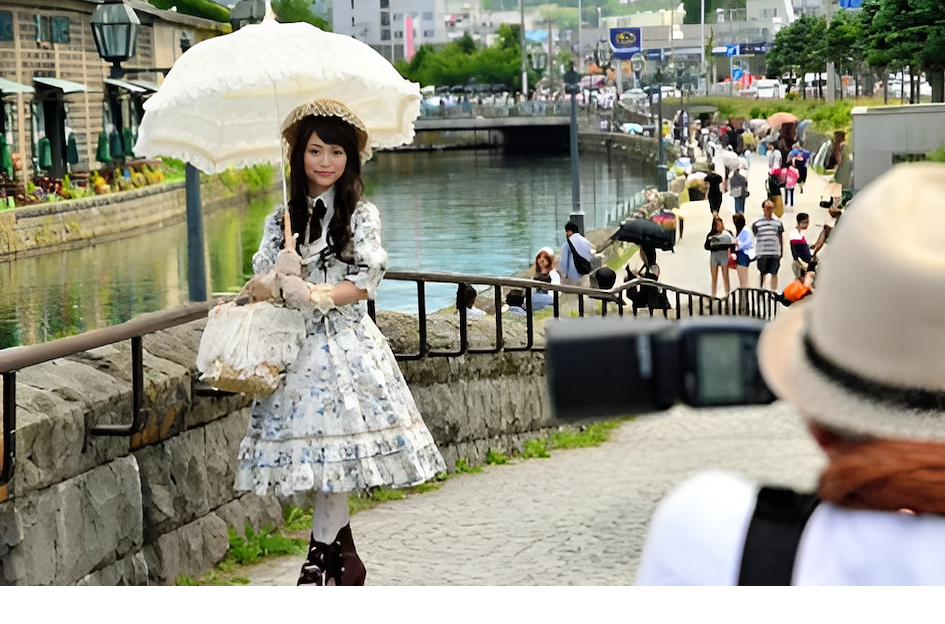
(Photo: A young woman sporting Lolita fashion poses for photographs on June 29, 2014 in Otaru, Hokkaido, Japan)
Lolita fashion is defined by its elaborate dresses and lavish use of laces, merging both Victorian era and ornate Rococo art movements into a piece.
Central to the Lolita aesthetics are the voluminous, decorative skirts adorned with delicate lace ornates. Gowns and dresses and skirts are also predominant in Lolita aesthetics as the style is unabashedly feminine.
It consists of petticoats, ruffles, layered dresses and delicate accessories. For those whose style fits different aesthetics, this Japanese style offers all including classic, sweet, and gothic looks, each appealing to different shoppers.
As the Lolita subculture expanded beyond Japan’s vibrant streetwear scene, it found fans the world over, across the Asian diaspora and beyond. The US Lolita scene is one of the world’s largest, wrote Michelle Liu Carriger.
Want to shop Japanese fashion?
Why is the Lolita Style a Global Trend for Shoppers?
Lolita fashion embraces youthful femininity. And in a world where the rave for being elegant and young is high, it appeals to shoppers worldwide through petticoats, ruffles and lace and voluminous jumper skirts.
The style blatantly ignores the norms of mature and elegant femininity, which makes Lolita fashion a form of self expression. Lolita wearers in their 20s or 30s seek to make their own unique fashion statement.
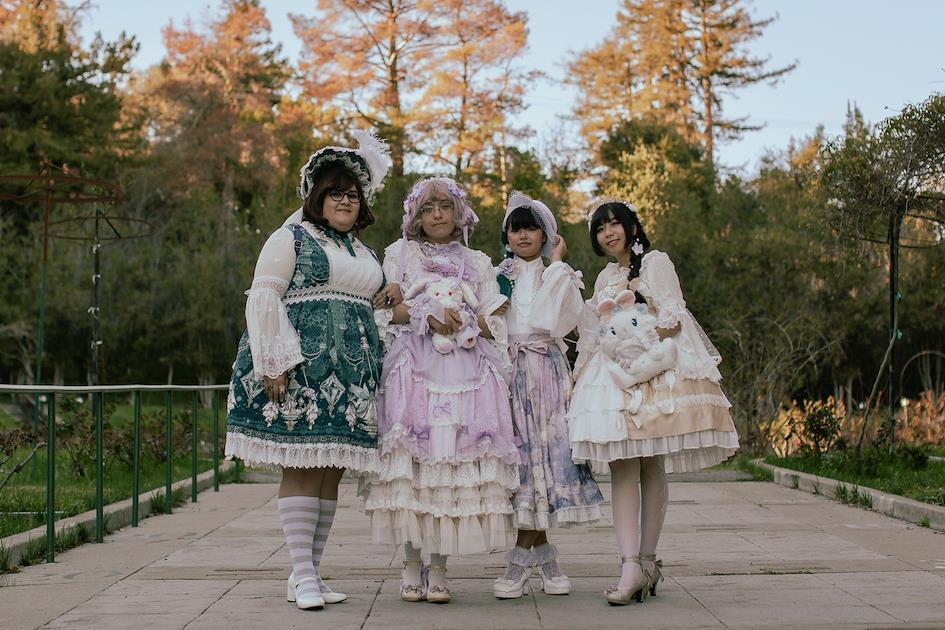
(Photo: Lolita style)
Shop Lolita From Japan
Visual Kei: Where Music Meets Fashion
The term is used to refer to a Japanese music genre that utilizes elaborate, dyed hairdos, excessive makeup, and extravagant jewelry.
In the 1990s, visual kei boomed in album sales as the genre was competing with that of J-pop. Meanwhile Visual Kei does not describe any particular music genre but a style of dressing that artists wear when performing.
The term “visual kei” translates to “visual style” in English. This means that the genre of music is less about sound and more about visual expression.
Visual Kei bands can make Glam rock, punk rock, gothic rock and heavy metal music but their fashion sense gives them the tag.
The most common visual kei look is an androgynous dressing or full-on cross dressing. However, because there are many different versions of visual kei, there are many different types of clothing that can be worn in this style.
In more gothic versions of the style, things like dark lace, cobweb fabrics, skulls, crowns, crosses, and other spooky wardrobe items and fabrics will be used.
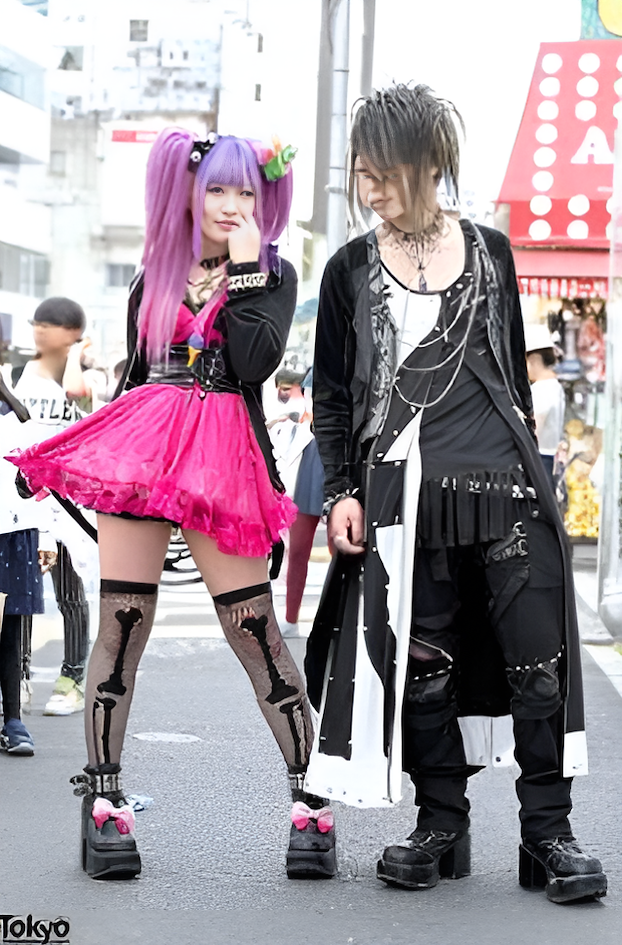
(Photo: Visual Kei, Japanese fashion)
Visual Kei From Japan
Why is the Visual Kei Style a Global Trend for Shoppers?
Visual kei is more about fashion and aesthetics than it is about music. Its style can be said to be flamboyant costumes that are now being rocked as normal day clothes.
With its androgynous and gender ending themes, it is no surprise that Visual Kei has gained the global appeal of shoppers. The non-gender conforming identities in pop culture are well reflected in these outfits.
Male artists in skirts or dresses are not uncommon in Japanese Visual Kei. Hence its worldwide allure.
Also Read: THE TOP 10 JAPANESE STREETWEAR BRANDS YOU NEED TO KNOW OF
Conclusion
Japanese fashion has chosen to embrace unconventional fashion styles. This has gained the industry a global appeal of shoppers.
With Harajuku’s acceptance and inclusivity of all individual fashion statements, to Lolita's soft, youthful and feminine allure, to the gender defying Visual Kei, Japanese street fashion seems like it will remain center stage for a long time.
Have you signed up for ZenMarket yet?
ZenMarket is the place to get your hands on goods directly from Japan!
Sign up for FREE now